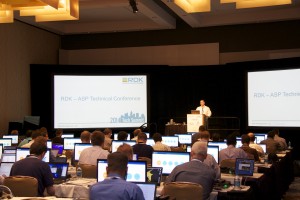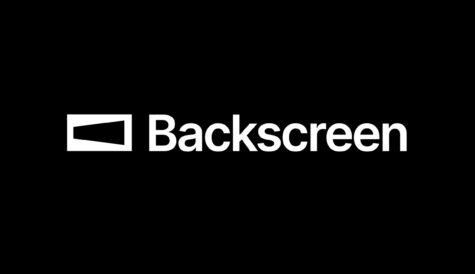Standard practice – what can RDK do for cable?
With traditional pay TV operators now struggling to match the speed of innovation seen from web-based services, operators are looking for ways to replicate an internet-type model on set-top boxes. RDK is held up as the answer. Stuart Thomson reports.
Attempts to create standardised ways of building things is nothing new in the TV business and nowhere is this more the case than in the cable industry. The DOCSIS standards supported by CableLabs in the US, and subsequently by EuroCableLabs – the two organisations have now merged – have been highly successful and have helped create the triple-play based success of cable in building its internet business.
Broadband cable is a standout example, but in the video world, highly successful attempts to standardise elements of the relevant technology have helped clear the way for digital switchover, with the DVB standards for cable, satellite and terrestrial distribution delivering results across the fragmented and divergent markets of Europe and elsewhere.
Less successful perhaps have been attempts to standardise the delivery of advanced TV services. Responsibility for creating viable technical platforms for such services has largely fallen to providers with proprietary technologies, while attempts to establish common standards – such as DVB-MHP or OCAP – have often failed to fulfill the full extent of the promises made by their promoters.
There are some obvious reasons for this. Advanced and interactive services bring TV into contact with the kind of functionality that users are now accustomed to on the web, and the speed of innovation in online services is very different from that of the world of TV, where new services and interactive applications have in the past been tested carefully for months or even years ahead of their launch. Operators also tend to be very cautious about making major updates to software on set-top boxes that could bring users’ TV viewing to an abrupt halt as devices freeze.
Nevertheless, cable and other service providers have long realised that the web, and latterly the app-based video experience available on tablets, smartphones and other devices, has changed the nature of the game. It is no longer possible to let things be: for TV to stay relevant it has to provide a user experience that matches the flexibility, functionality and user-friendliness of web-based video services.
Standardised baseline
In the US, Comcast has been driving the industry’s response to the change, with the giant operator taking on a number of technology-related initiatives based on its perception of its own requirements. These have subsequently been promoted to the wider industry in an attempt to create standardised ways of doing things – something that falls short of an actual ‘standard’ but which provides a ‘standardised’ baseline for other vendors to work to.
RDK – the Reference Design Kit – is one of these Comcast-pushed initiatives. RDK is described by the body set up to[icitspot id=”262881″ template=”box-story”] administer it as a “pre-integrated software bundle” that provides a common framework for consumer premises equipment – namely set-top boxes and multimedia gateways. Vendors – and operators – can then layer their own, proprietary, user experience software on top of the standardised elements. The goal is to enable vendors and others to write applications once that can then be delivered with minimum customisation to services providers across the industry as a whole. RDK has been set up on open source lines, with contributions managed by an independent body – RDK Management. While RDK was intended primarily as a cable initiative, there is no reason in principle why it can’t be adopted by telecom and satellite-based service providers as well.
Steve Heeb, president and general manager of RDK Management, says that the RDK is fundamentally different from middleware standards initiatives in that there is no attempt to agree on a specification through a cycle of committee meetings.
“The web does not get a committee to decide how to run it,” he says. “[With RDK] people see the good coming from the community because everyone is working on features and bug fixes that everyone else gets. We do have structures to deal with code contributions and overlaps – so we have quarterly meetings and forums – but the structure is to ensure it stays open and transparent and everyone benefits from the community.”
Heeb says the RDK is a “standardised” set of software rather than a software “standard” that provides a baseline for SoC vendors to work to. The framework is also designed to be flexible in the sense that operators can take components that are relevant for them – such as a recently accepted set of DVB-related components for the European market. “The US uses Cablecard conditional access and the RDK has a macro security aspect, but Europe has a DVB solution that works in the same way and DVB components for Teletext and subtitles have been contributed by the European operators,” he says.
S3 Group has been given the job of managing the code for the RDK by RDK Management. S3 releases software to the RDK community in numbered releases and also manages contributions to the RDK core specification or ‘trunk’. The RDK is ‘component-based’ meaning vendors can contribute components covering specific elements or can add to existing components. The RDK has four basic layers – a layer setting out requirements for system-on-a-chip vendors, a layer for OEMs, a layer of generic components and an application layer.
DVB components
The components layer – the part managed by S3 – covers management of media streaming elements and the main things that are required in set-top boxes. According to S3’s vice-president of technology Philip Brennan, his company looks for components that the industry is asking for and that are supported by operators as one way to keep the process manageable and on track. “If there is an operator that is really sponsoring a contribution and it is something they need and will be deployed, that is one of the key driving principals,” he says. “We will look at vendors suggesting contributions but [only] with operators behind them.”
The most prominent recent example of this is a set of contributions to support DVB-related deployments, contributed by SeaChange. The operator support in this case came from Liberty Global, which had earlier diverged from the RDK trunk in order to deliver what it needed to support European requirements.
RDK Management accepted the DVB components contributed by SeaChange in June. These included elements to meet Teletext and subtitling requirements that are specific to Europe. SeaChange chief technology officer Shiva Patibanda said at the time that the RDK also needed to incorporate DVB Service Information (SI) modules to enable operators to deliver services via object carousels – used to provide interactive services within DVB broadcast channels.
This is important for operators that are looking to deploy services in-band as opposed to using the DOCSIS channel, although a growing number of operators are now turning to IP for the delivery of advanced services, he said.
While advanced operators are likely to use their two-way DOCSIS platforms to deliver advanced services, others may continue to use the in-band object carousel in order to prevent divergent ways of doing this from gaining ground. The various parties involved moved to build a common interface for this.
“Most of the operators now will have bi-directional networks and operate triple play services. We see more requests from the market to provide metadata and so on out of band,” says Peter Hahn, director of product management, SeaChange. “The DVB components are only to support networks that are always connected, but the overall trend is bi-directional and IP on the delivery side for services.”
SeaChange itself has been a major contributor to the RDK, but Hahn makes it clear that the framework provided by the RDK initiative leaves plenty for individual vendors still to do on top. “RDK is not a complete software stack. You need someone to take it and make it commercially deployable,” he says. SeaChange provides its own software stack on top and acts as a system integrator. “The RDK is not a Holy Grail of software embedded code-writing that solves all interoperability questions,” he says. “You still need test suites and so on to make things work on different devices, but it makes it easier and faster to deploy new software, especially the lower layer of set-top box software.”
The addition of DVB components highlighted the nature of the mechanisms that RDK Management has put in place to manage the process.
“The process we have is that each of the components has a decision maker attached to it. There are a number of reviewers and there is a lot of input and it is very visible,” says Brennan. The goal, he says, is to prevent “multiple options” emerging for individual components. In the case of the DVB components promoted by Liberty, the RDK is now on track with a single trunk and components that can be used by other operators, avoiding fragmentation of the initiative. “Liberty Global was keen to make it work for other operators,” says Brennan. “Our goal is to have one known [trunk] of the RDK. As things stand we have been able to do that, rather than have branches going off for Europe [alone].”
Comcast has itself committed never to deviate from the core RDK trunk and has maintained that RDK Management will continue to operate at arm’s length.
Cable technology provider Arris has adopted the RDK as one of the platforms it makes sense for it to support. Charles Cheevers, chief technology officer, customer premises equipment at Arris, says that the platform is one of the first software stacks that the company has ported all its hardware platforms to. Arris has its own Moxi gateway middleware stack, which primarily covers the user experience elements, and Cheevers said that RDK will be supported as standard and adopted by operators that want to use it.
“The RDK has standard SNMP [Simple Network Management Protocol – the standard for managing devices on IP networks] but no concept of a UI or HTML support,” says Cheevers. While there is some overlap between, for example, Moxi and the RDK, the latter therefore leaves plenty of space for software innovation for companies like Arris.
User experience
The RDK layers stop short of the part of the cake that comprises the user experience itself. The guiding principal has been that vendors and operators alike will use the user experience layer to create differentiated offerings to attract subscribers.
Among middleware providers that have partnered with the RDK is Espial, which has made some intellectual property contributions in the form of updates to the part of the framework that deals with time-shifted TV. Kirk Edwardson, marketing director, says that the RDK “solves a big challenge for the industry in that there has never been a standard definition of software and middleware. It is delivering a framework that is very appealing for the cable industry.” He says the RDK framework is key to Espial’s strategy. The RDK, says Edwardson, differs from previous middleware initiatives in that “it doesn’t go to the top of the stack”. He describes it as essentially “pragmatic” with the goal of getting to market quickly and remaining transparent. The RDK, he says, is designed to enable changes to the user experience to be implemented immediately rather than over an 18-month time frame involving the testing of multiple variations for multiple set-top boxes.
“RDK started as a cable industry initiative to address the problem that changes to the UX have taken 18 months and were not responsive to the market,” he says. “RDK is consistent so you get boxes that are not different from each other.” He adds that the RDK brings “web techniques to the pay TV environment”. Currently, the initiative is still at an early stage and Espial and others are focusing on delivering core video applications including the EPG, though Edwardson says that apps such as YouTube on the TV can be expected in the medium term.
Looking to the future
According to Edwardson, leaving this top “UX” layer open as the place where operators and vendors can differentiate their offerings benefits both companies like Espial and the industry as a whole. “I think the UX has always been our sweet spot – delivering the best user experience and tuning our software to the best hardware available at the time,” he says. “The industry is looking to us to build the engine on the base RDK framework.”
The RDK has been built outside the traditional home of cable standards – CableLabs – although the cable standards body is a licensee. CableLabs is expected to provide testing tools and other elements to support the initiative, but no public announcement has been made.
While the initiative has won heavyweight support from major operators – including Liberty Global – RDK is not without its critics and a number of important technology players have not signed up. Nagra, for example, has declined to adopt the RDK, holding that its own Open TV 5.0 software is based on the same principles as RDK but offers a platform that is already deployed. For technology providers such as Nagra, signing the RDK agreement would involve giving up too much of their own intellectual property to be worthwhile. It is also argued ultimately that someone has to take ownership of deployments to ensure that all the elements work properly together.
While there has also been some criticism that the RDK is too cable-centric and too focused on a high-end set-top box model, some telcos have expressed an interest and Orange, for example, has signed the RDK agreement that gives participating companies access to the shared resource of RDK code.
Arris’s Cheevers provides a counter-argument to those who hold that the RDK is too cable and set-top centric.
Typically, he says, operators want to have a box in the home servicing the main TV screen. Subscribers are willing to accept that the box is leased or bundled with services.
For second and third screens, however, operators are keen to provide a low-cost alternative to meet consumers’ growing appetite for video-enabled devices such as HDMI dongles, streaming boxes and games consoles. This could take the form of a low-cost box that is connectable via WiFi to the main device in the home. Nor, he says, need other types of operator fear that the platform is too cable-centric, arguing that any open source initiative by telecom service providers would likely produce something very similar.
SeaChange’s Hahn agrees. “It was initiated by cable but cable is evolving into IP delivery,” he says. “RDK can be used by almost any operator and we would like to see other operators outside the cable world looking at it.”
According to its proponents, the RDK is set to fulfill its promise of transforming the development cycle for applications and updates to the TV user experience. Heeb says that the RDK looks to the future by building in a browser and through security – the two key components to enable cloud-based apps and services.
For Arris’ Cheevers, the RDK enables cloud-based services more by what it doesn’t do than by what it does. With the RDK, he says, operators can go to cloud-based services or can deliver them on dedicated hardware. Arris, he says, has in this case followed a similar strategy with its own Moxi platform, enabling operators to make user experience changes in the cloud rather than via a firmware update to a box.
Ultimately, the RDK, like all such initiatives, will stand or fall by what it achieves in practice. With pay TV operators keeping a wary eye on online video service providers such as Netflix, operators feel they are in no position to ignore initiatives that hold the promise of enabling faster innovation cycles.




